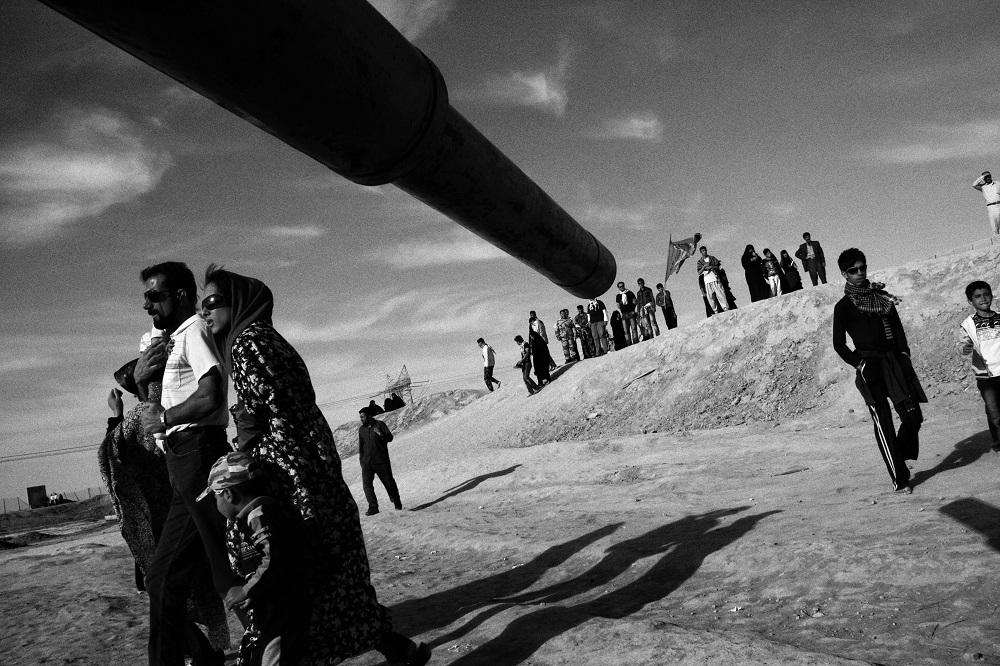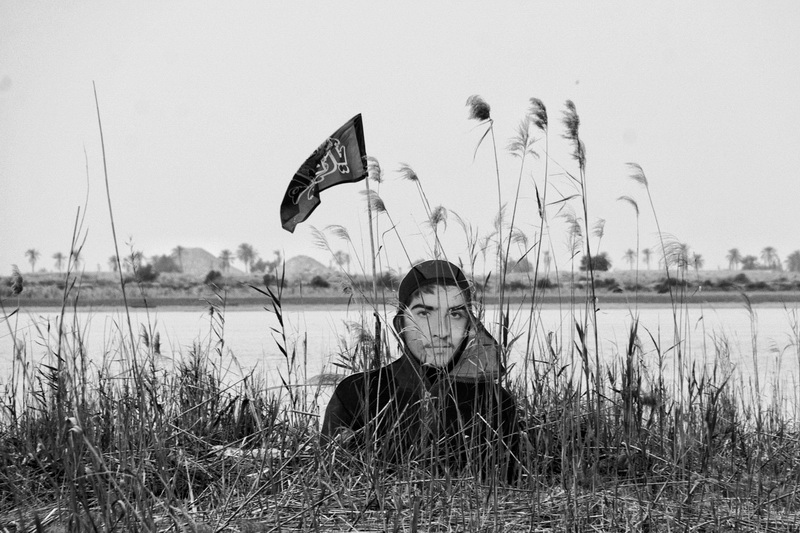
The image of an Iranian “martyr” who was killed in the 1980-88 Iran-Iraq War stands on the bank of the Arvand River. Every year, nearly two million people visit the battle zones where many Iranians soldiers were killed. Iranians consider the soldiers who died in the war as martyrs.
Photo from "trip to holy land" project
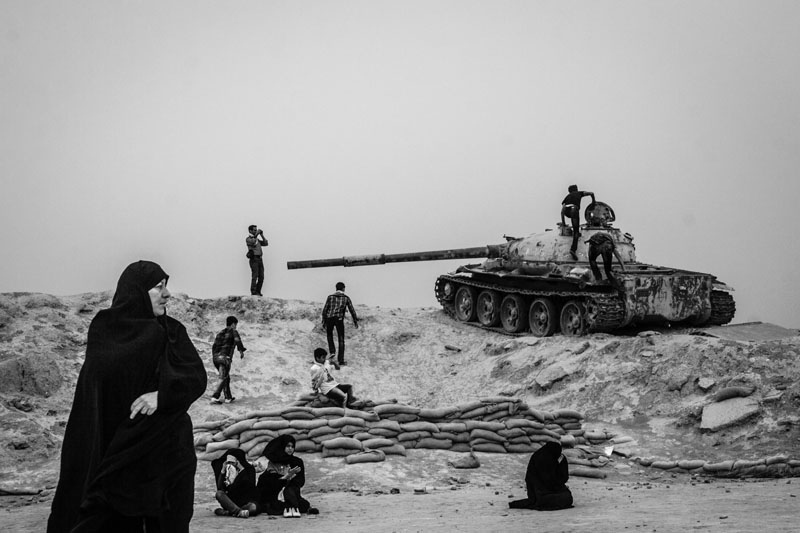
Each year, nearly two million people travel to war-torn areas of the war between Iran and Iraq. The people of Iran believe that these areas are holy because of the blood of the Iranian martyrs who were killed in the war. Many of them are families of martyrs and travel to those areas to pray and mourn for their martyred family members. Shalamcheh is a border area between Iran and Iraq and is one of the first regions that was attacked by Saddam Hussein, the Iraqi dictator. It was destroyed during the war and thousands of soldiers were killed in this region.
.
people are visiting the shalamcheh area for Iranian martyrs. Ahvaz city, Shalamcheh border
photo from " trip to holy land " project
.
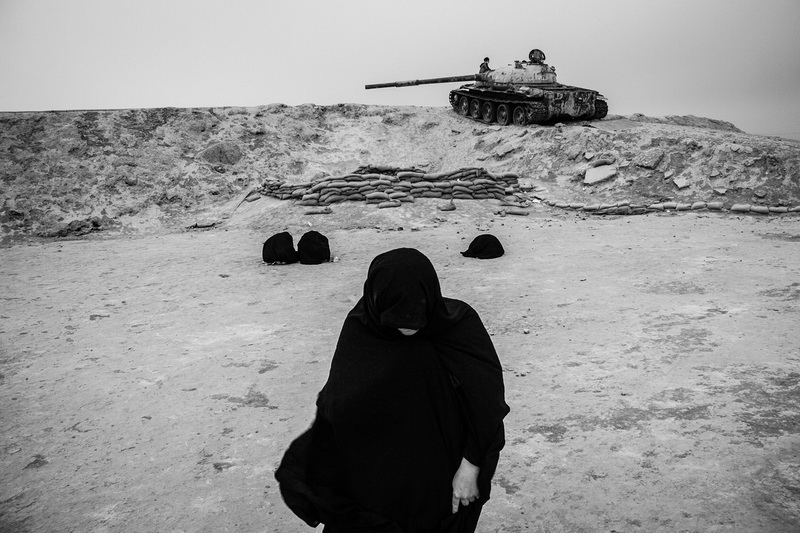
Each year, nearly two million people travel to war-torn areas of the war between Iran and Iraq. The people of Iran believe that these areas are holy because of the blood of the Iranian martyrs who were killed in the war. Many of them are families of martyrs and travel to those areas to pray and mourn for their martyred family members. Shalamcheh is a border area between Iran and Iraq and is one of the first regions that was attacked by Saddam Hussein, the Iraqi dictator. It was destroyed during the war and thousands of soldiers were killed in this region.
Women are crying in the shalamcheh area for Iranian martyrs.
From my long-term project “War is Still Alive”. .
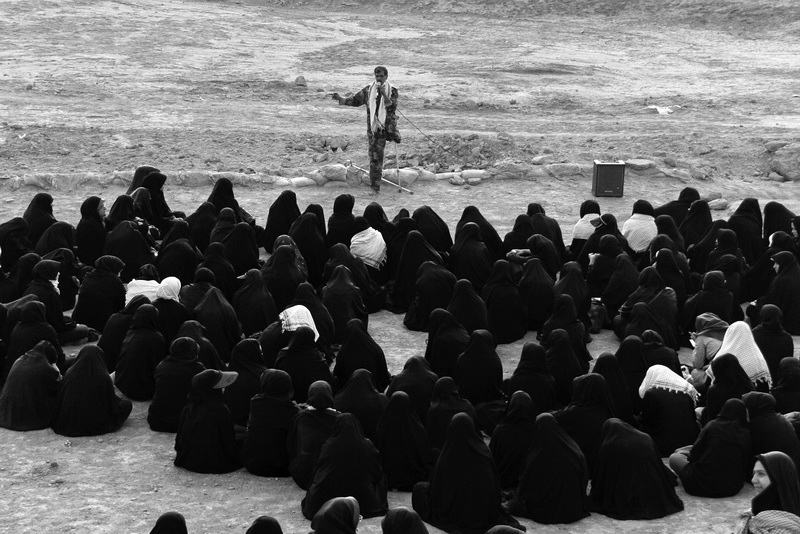
Each year, nearly two million people travel to war-torn areas of the war between Iran and Iraq. The people of Iran believe that these areas are holy because of the blood of the Iranian martyrs who were killed in the war. Many of them are families of martyrs and travel to those areas to pray and mourn for their martyred family members. Shalamcheh is a border area between Iran and Iraq and is one of the first regions that was attacked by Saddam Hussein, the Iraqi dictator. It was destroyed during the war and thousands of soldiers were killed in this region.
.
photo from " trip to holy land " project
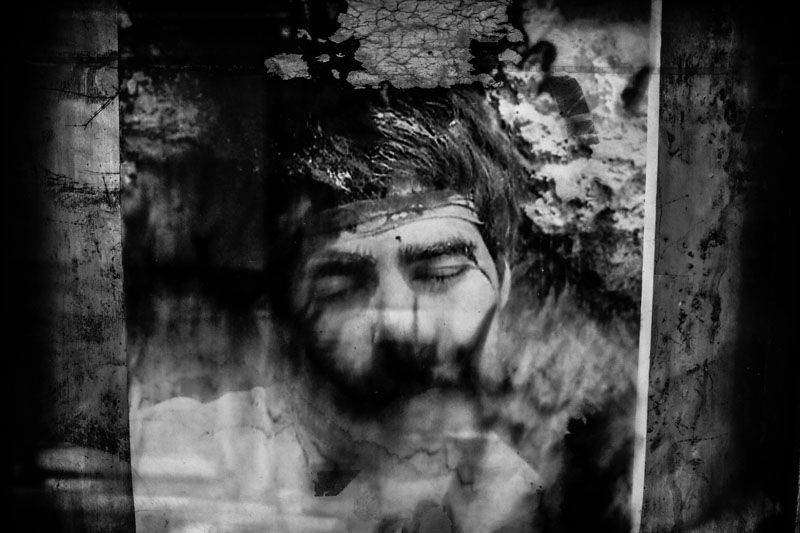
Faded portrait of Iranian martyr Amir Haj Amini, who was martyred in March of 1987, as a result of a mortar shell injury. This image became popular among the Iranian people after the war as the most beautiful martyr image. Because of that, many people use this image for the graves of unknown martyrs, without name or identity. Tehran,
from my long-term project “Martyr is Alive”.
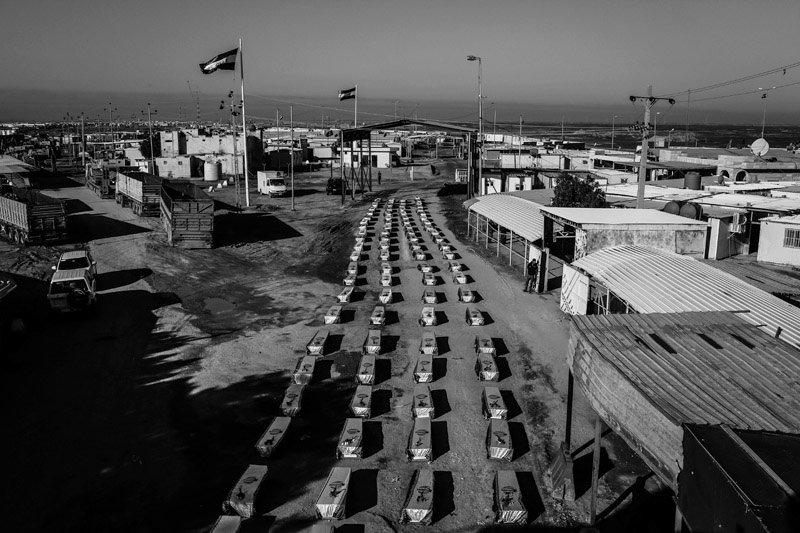
The war between Iran and Iraq started on September 22, 1980, with iraq's massive aggression against Iranian territory. The war lasted eight years and more than 220,000 Iranian soldiers were killed. The war, identified as the longest conventional conflict of the 20th century, ended in July of 1988, after the two countries accepted UN resolution 598. After the war, it was revealed that the bodies of over 10,000 Iranian soldiers were missing and there is still no sign of them.
In recent years, the bodies of about 7,000 Iranian martyrs have been found and they have been buried under the name of 'Unknown Martyrs' because they can’t be identified. At present, over 5,000 other martyrs remain in Iraq. Corpses are found and brought to Iran every few months. Recently, eighty Iranian bodies were found in Iraq and are waiting for license to go to Iran. Shalamcheh border, Iran and Iraq
from "Mothers of Patience"
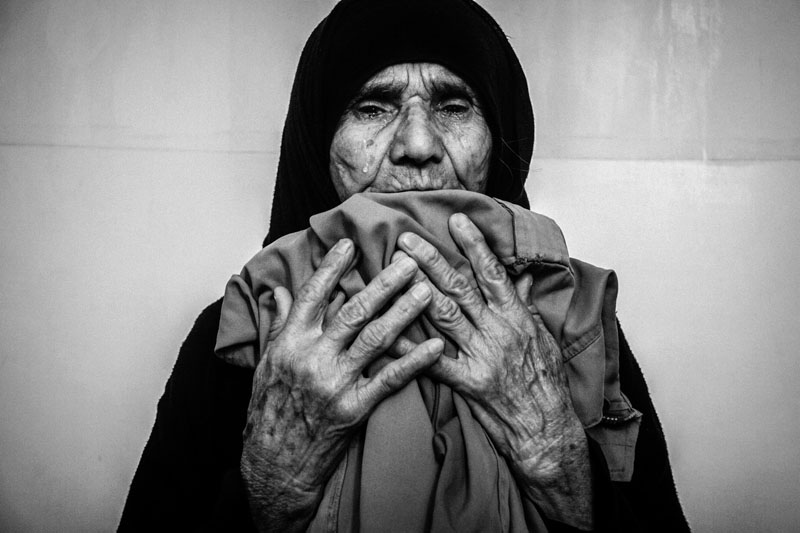
During the Iran and Iraq war (1980-1988) more than 220, 000 Iranian soldiers were killed. After the war it was revealed that the bodies of over 10,000 Iranian soldiers were missing and there is still no sign of them.
The mothers of Iranian soldiers, whose bodies were never returned, are crying for their lost sons every day. They do not know anything about their lost sons’ bodies. Years of crying has damaged the eyesight of many of the mothers. Illam City, July, 25, 2013
Anbar Jaberi (72), who has waited 28 years for her son, is crying over her son’s clothes. This is the only way for her to be calm.
from my long-term project “Mothers of patience”.
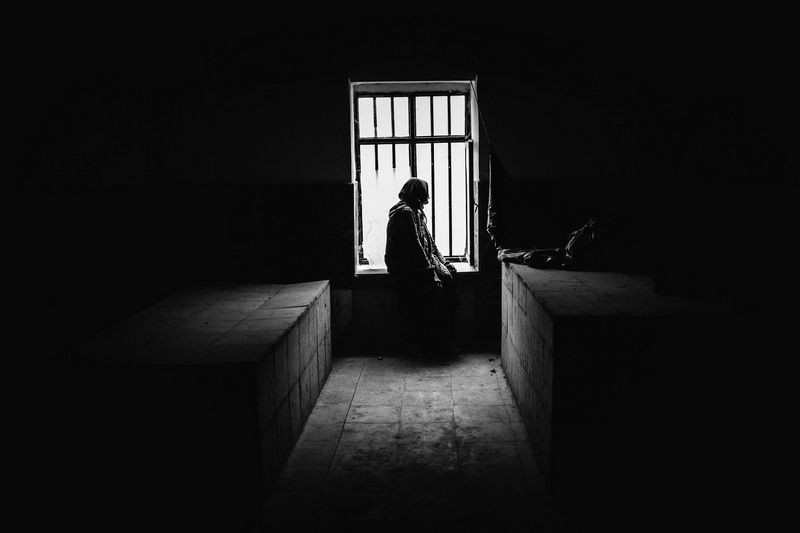
Mustafa Salari died fighting in the Iran-Iraq war and his body was never returned to his family. Salari’s father made this small room for his son, open to the public for prayer and contemplation. Salari’s mother often visits the site, crying alone for hours.
Photo from "Mothers of patience" project
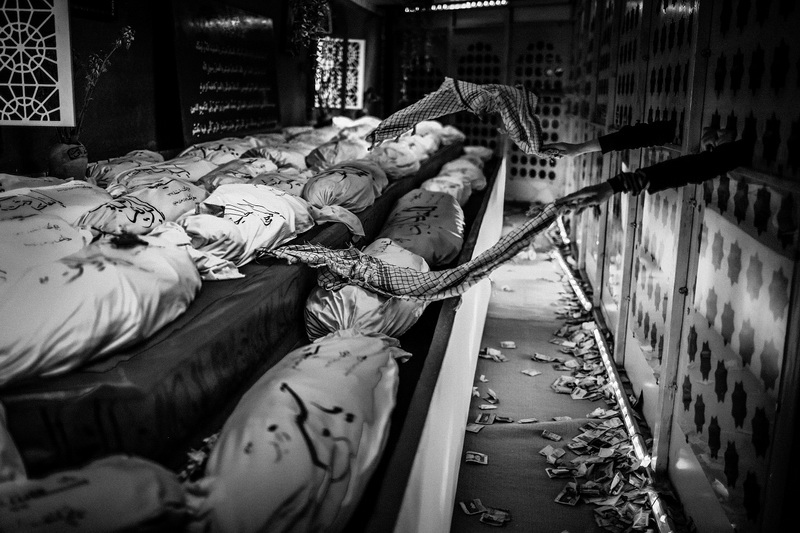
The war between Iran and Iraq started on September 22, 1980, with iraq's massive aggression against Iranian territory. The war lasted eight years and more than 220,000 Iranian soldiers were killed. The war, identified as the longest conventional conflict of the 20th century, ended in July of 1988, after the two countries accepted UN resolution 598. After the war, it was revealed that the bodies of over 10,000 Iranian soldiers were missing and there is still no sign of them.
After exchanging the bodies of over 80 Iranian soldiers whose corpses had been recently found recently, the remains are carried from the border towards Me'raj Shohada, where families and mothers of the martyrs welcome the bodies.
from "Mothers of Patience"
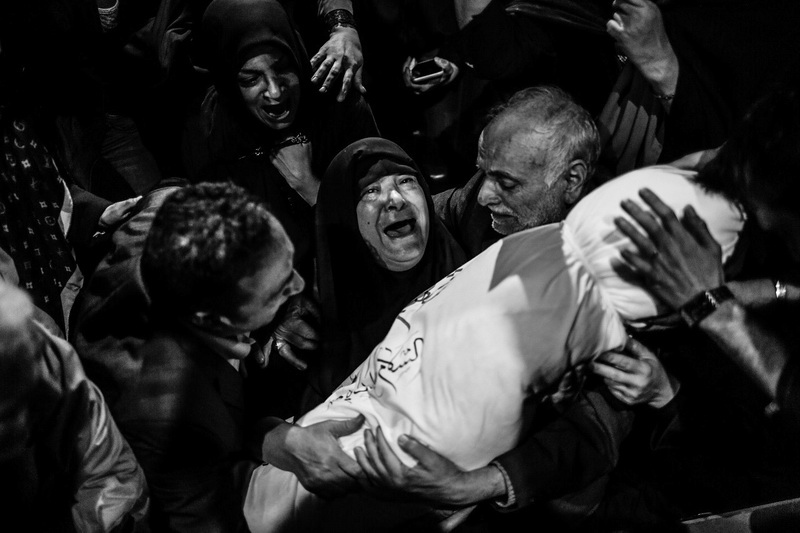
Ezzat (64) a mother who waited 30 years for news, meets the body of her son, Hamid Saeedi, who was 18 years old when he went to war. Tehran
The war between Iran and Iraq started on September 22, 1980, with iraq's massive aggression against Iranian territory. The war lasted eight years and more than 220,000 Iranian soldiers were killed. The war, identified as the longest conventional conflict of the 20th century, ended in July 1988, after the two countries accepted UN resolution 598. After the war, it was revealed that the bodies of over 10,000 Iranian soldiers were missing and there is still no sign of them.
from my long-term project “mothers of patience”.
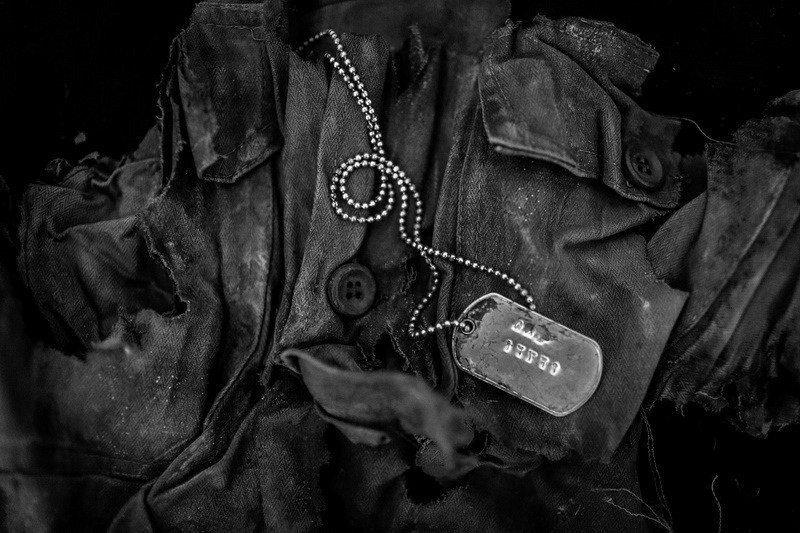
Dress of one of the Iranian soldiers who were Killed in the Iran-Iraq war.
The body and clothes and ID of Martyr was found after 32 years .
Photo from " Unknown martyrs " project
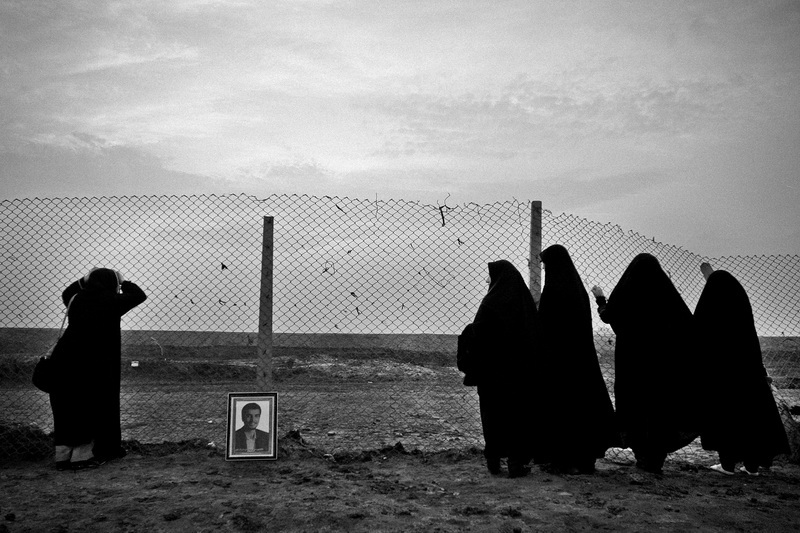
Each year, nearly two million people travel to war-torn areas of the war between Iran and Iraq. The people of Iran believe that these areas are holy because of the blood of the Iranian martyrs who were killed in the war. Many of them are families of martyrs and travel to those areas to pray and mourn for their martyred family members. Shalamcheh is a border area between Iran and Iraq and is one of the first regions that was attacked by Saddam Hussein, the Iraqi dictator. It was destroyed during the war and thousands of soldiers were killed in this region.
.
Women are crying in the shalamcheh area for Iranian martyrs. Ahvaz city, Shalamcheh border
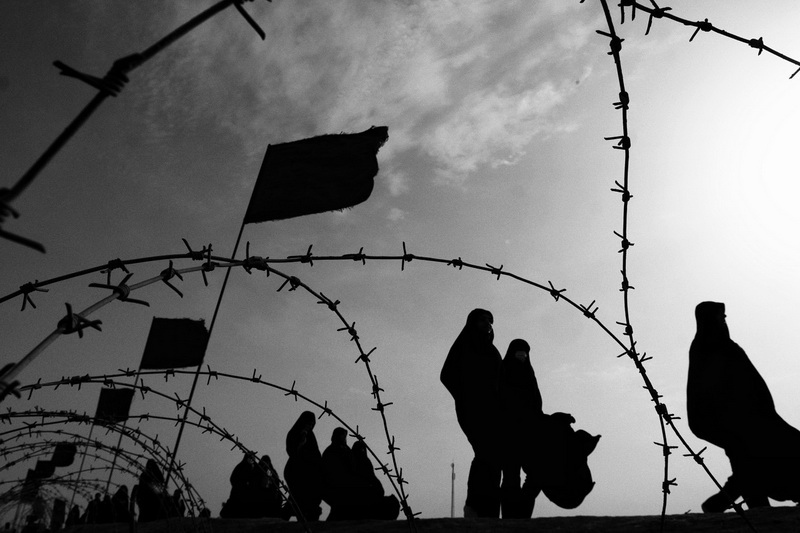
Each year, nearly two million people travel to war-torn areas of the war between Iran and Iraq. The people of Iran believe that these areas are holy because of the blood of the Iranian martyrs who were killed in the war. Many of them are families of martyrs and travel to those areas to pray and mourn for their martyred family members. Shalamcheh is a border area between Iran and Iraq and is one of the first regions that was attacked by Saddam Hussein, the Iraqi dictator. It was destroyed during the war and thousands of soldiers were killed in this region. Talaeieh area, Ahvaz City
from my long-term project “trip to holy land ”.
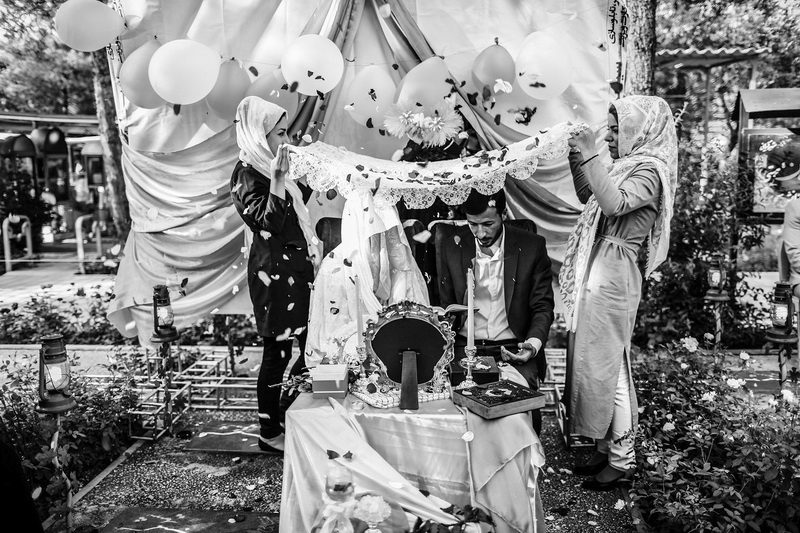
A young couple gets married in front of an Unknown Martyr’s grave. Iranians believe that those who died in the war are martyrs who are holy beings who can help the lives of those on earth. On weekends, and on important holy days, people go to the cemeteries where martyrs are buried to pray and ask for help .
Photo from " martyr is alive " project
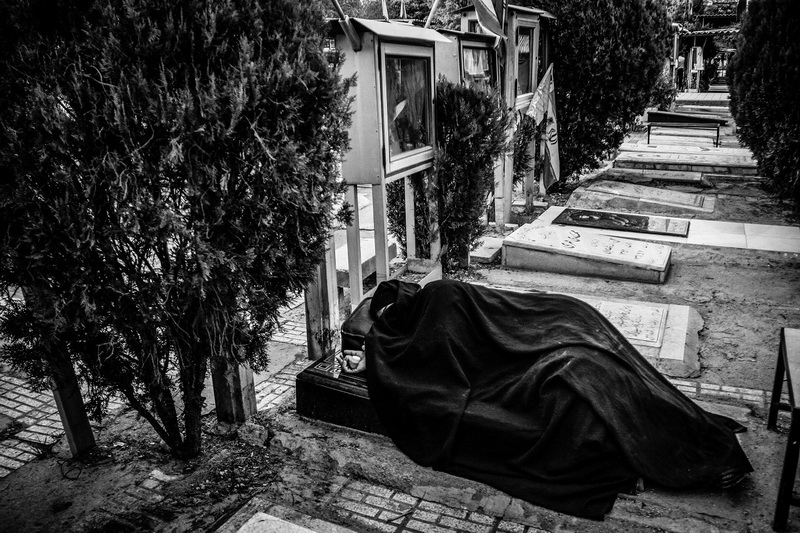
The war between Iran and Iraq started on September 22, 1980, withIraq's massive aggression against Iranian territory. The war lasted eight years and more than 220,000 Iranian soldiers were killed. The war, identified as the longest conventional conflict of the 20th century, ended in July 1988, after the two countries accepted UN resolution 598.
The revival of traditional religious beliefs in the Islamic Revolution, and the Iraqi-imposed war against Iran combined to make martyrdom a deep and powerful issue in Iranian culture among families who lost people in the war.
The Iranians believe that anyone who resists in the right way, defending people and sacrificing himself is a martyr and remains alive. A martyr has saved many other lives by his death and, therefore, martyrs enjoy a great position in the Iranian society. While they don’t have bodies, their spirits are alive and always live with their families and communities.
Behesht-e Zahra in Tehran is the biggest cemetery of Iranian martyrs. It hosts the bodies of over 33,000 Iranian nationals who were killed in war. The people in Tehran go to the tombs of their martyrs every week and live with them. They even hold the most important events of their lives beside the tombs of martyrs.
A member of a martyr’s family sleeping on the grave of a martyr. Tehran
photo from " martyr is alive " project
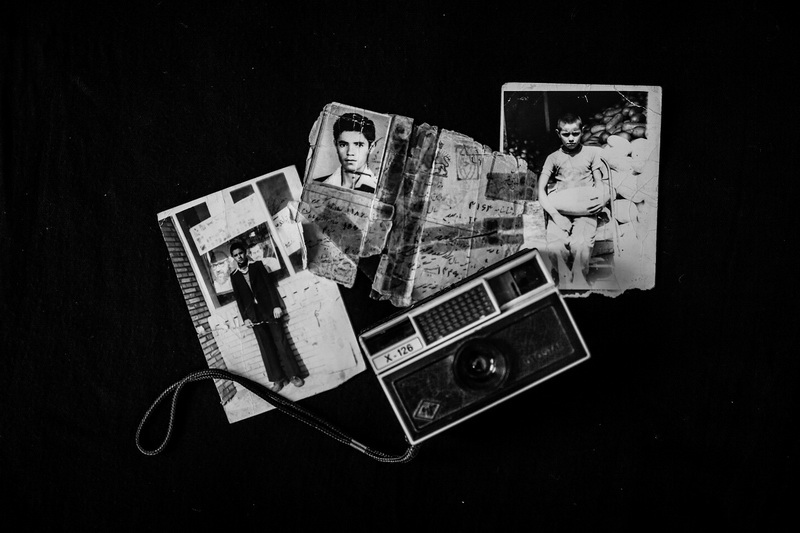
Mothers’ photos of sons they lost during the war. The bodies of thousands of soldiers who fought in the Iran-Iraq War have not been found. These mementoes help bring solace to the mothers who do not want their sons to be forgotten.
photo from " mothers of patience " project
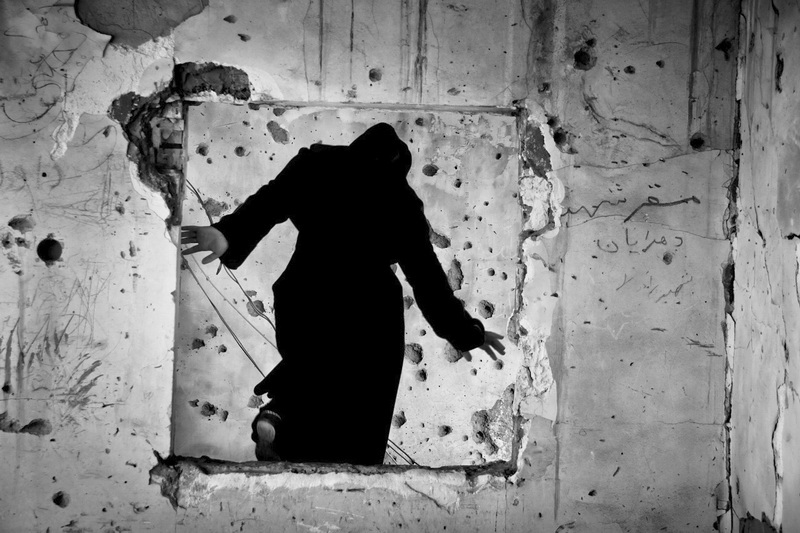
Photo from " This city has no heroes "
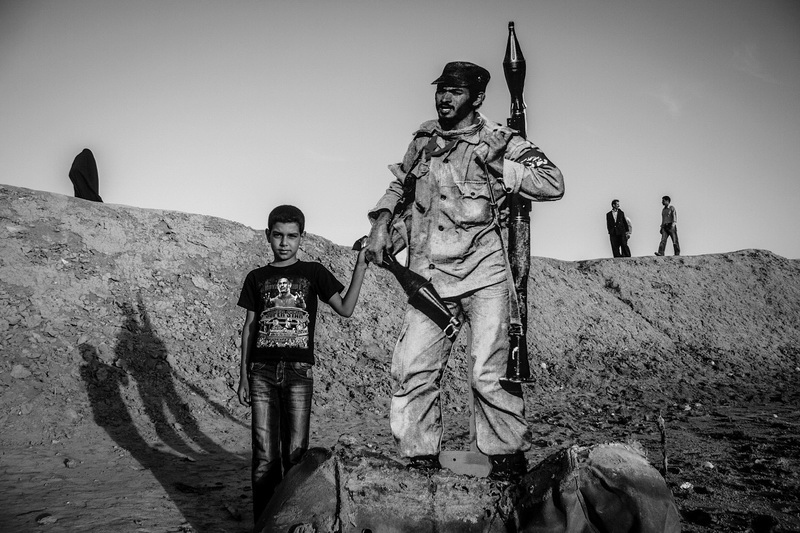
An Iranian child wearing a t-shirt featuring WWE wrestler John Cena, poses with the life-size image of an Iranian soldier, or martyr, killed in the Iran-Iraq War.
Photo from "trip to holy land" project
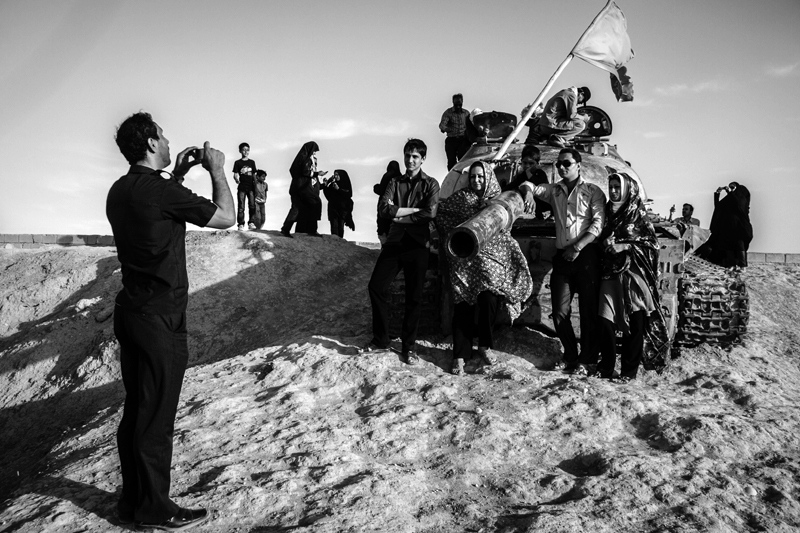
Each year, nearly two million people travel to war-torn areas of the war between Iran and Iraq. The people of Iran believe that these areas are holy because of the blood of the Iranian martyrs who were killed in the war. Many of them are families of martyrs and travel to those areas to pray and mourn for their martyred family members. Shalamcheh is a border area between Iran and Iraq and is one of the first regions that was attacked by Saddam Hussein, the Iraqi dictator. It was destroyed during the war and thousands of soldiers were killed in this region.
.
photo from " trip to holy land " project
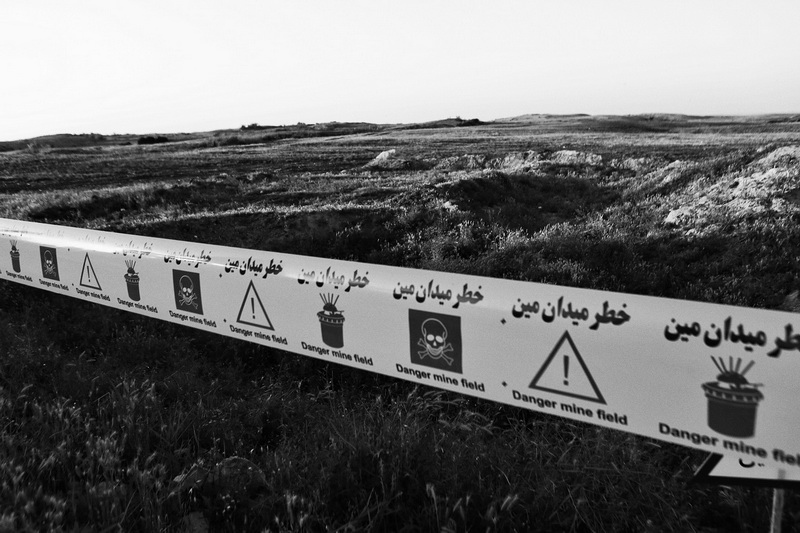
Iran is the second-most contaminated country in the world with 16 million hidden mines, contaminating an area over 42,000 square kilometers, mainly along Iran’s border towns with Iraq. Exact statistics are hard to find, but every year civilians continue to be victims of the mines.
people are victims of the hidden mines in the Iran's border towns.
photo from new work " children mine"
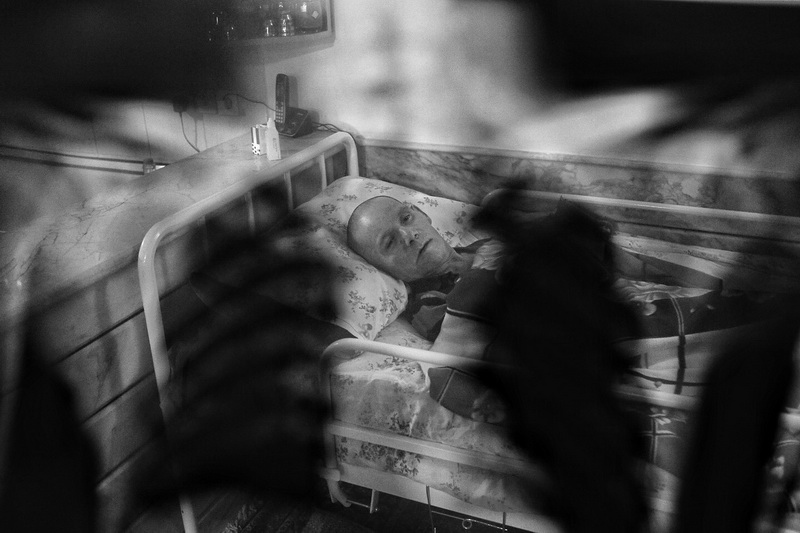
Reza Reyhani, 57-year-old. As a boy, he was a minesweeper during the war, working to clear mine fields in Iran, a practice that was widely criticized in the West. He is ill and cannot speak or move today because of the chemical effects on his nervous system of his service during the war.
Photo from "Victims of war" project
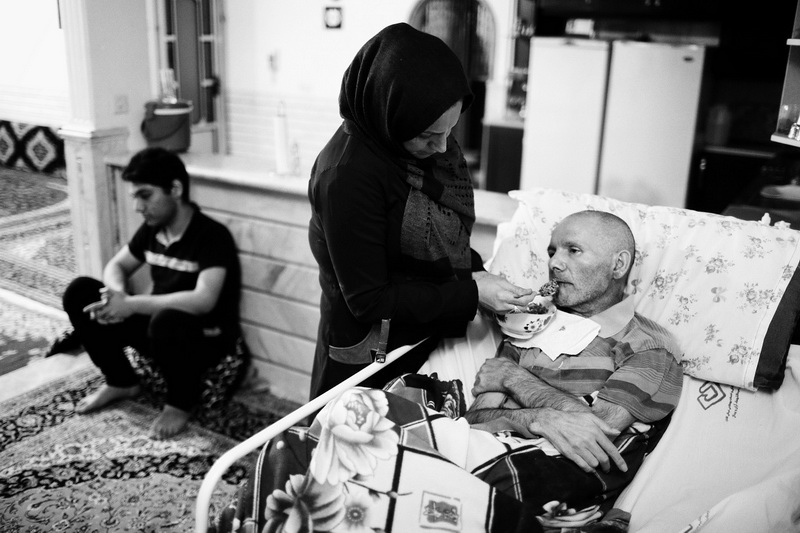
Reza Reyhani, 57-year-old. As a boy, he was a minesweeper during the war, working to clear mine fields in Iran, a practice that was widely criticized in the West. He is ill and cannot speak or move today because of the chemical effects on his nervous system of his service during the war.
Photo from "Victims of war" project
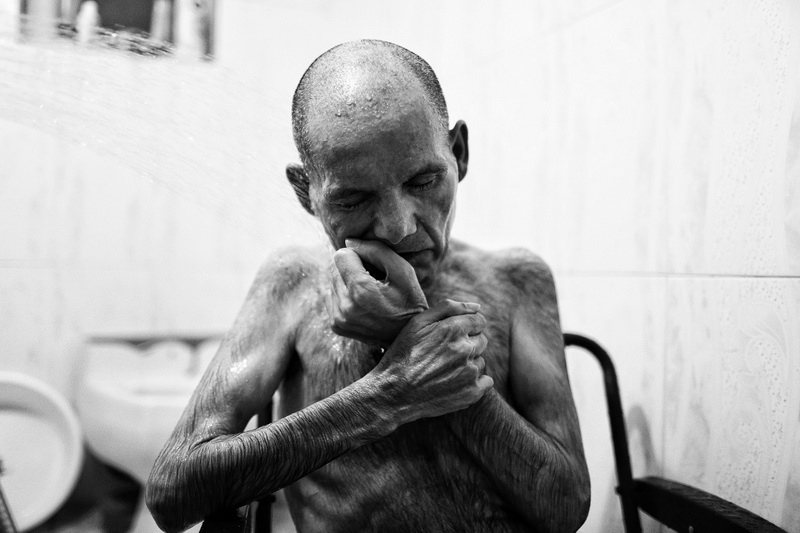
Reza Reyhani, 57-year-old. As a boy, he was a minesweeper during the war, working to clear mine fields in Iran, a practice that was widely criticized in the West. He is ill and cannot speak or move today because of the chemical effects on his nervous system of his service during the war.
Photo from "Victims of war" project
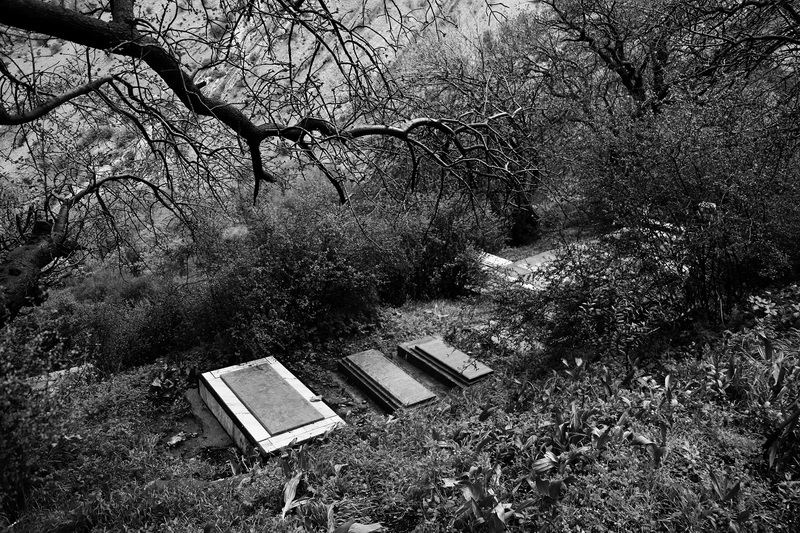
The graves of Iranian civilians who were killed by Iraq's chemical bombs. On July 22, 1988, five days after Iran formally accepted United Nations Security Council resolution 598, which had been passed a year earlier with a call for an immediate cease fire, the Iranian village of Zardeh was attacked by Iraqi chemical bombs. In the attack 275 people died and 1,146 were injured or suffered from toxic effects of inhalation.
Photo from "Victims of war" project
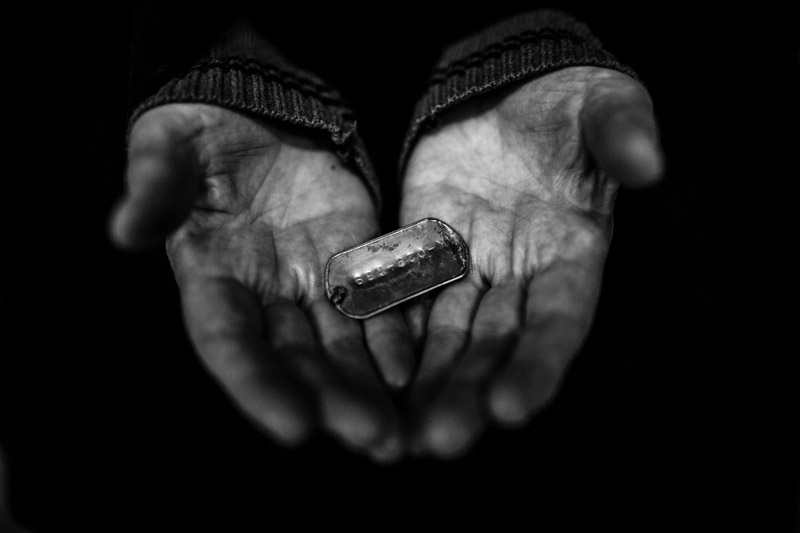
.
The war between Iran and Iraq started on September 22, 1980, with Iraq’s massive aggression against Iranian territory. The war lasted eight years and more than 220,000 Iranian soldiers were killed. The war, identified as the longest conventional conflict of the 20th century, ended in July 1988, after the two countries accepted UN resolution 598. After the war, it was revealed that the bodies of over 10,000 Iranian soldiers were missing and there is still no sign of them.
In recent years, the bodies of about 7,000 Iranian martyrs have been found and they have been buried under the name of 'Unknown Martyrs' because they can’t be identified. At present, over 5,000 other martyrs remain in Iraq. Corpses are found and brought to Iran every few months.
The body of martyr Hashem Khalili (16) was found in Iraq's Majnoun Island after 31 years. His body was identified by a plate and toothbrush. The plate is the only token remaining for his mother, Khadijeh Sha'bani, 64. Tehran
photo from “Mothers of Patience”project .
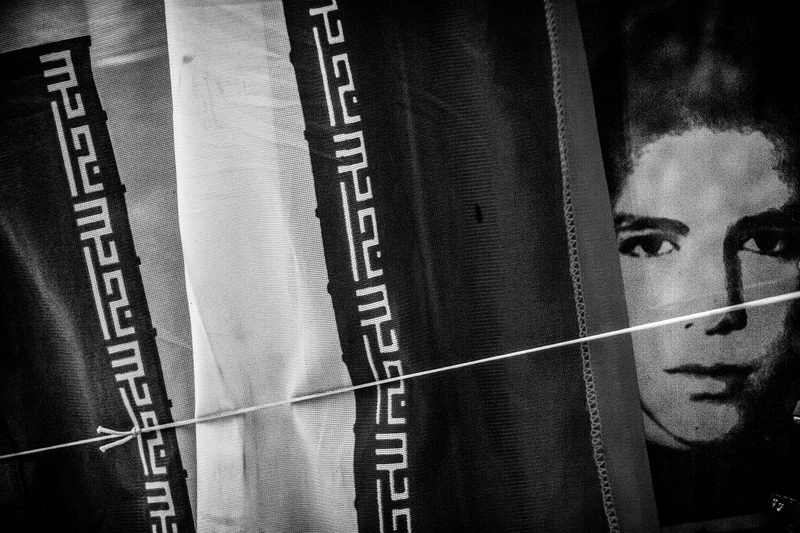
Photo from "martyr is alive" project
















